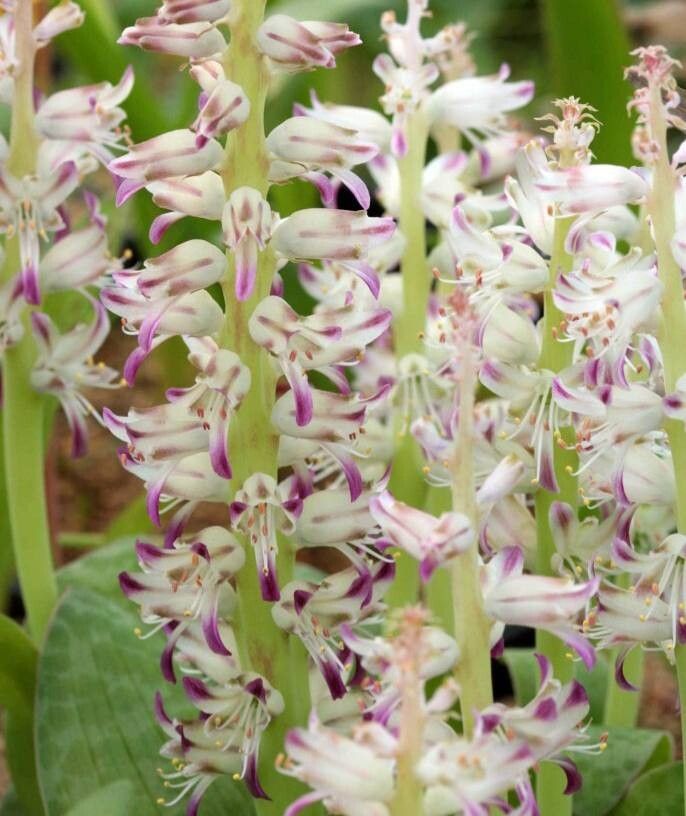Propagating Lachenalia kliprandensis: A Gardener’s Challenge
Lachenalia kliprandensis, also known as the Kliprand Lachenalia, is a captivating South African bulb renowned for its striking, often bicoloured flowers. Its vibrant colours and relatively compact growth habit make it a popular choice among bulb enthusiasts, particularly those seeking a touch of South African flair in their gardens or indoor collections. However, propagating this beautiful species presents unique challenges, making successful cultivation all the more rewarding. Its relatively slow growth compared to other lachenalia species adds to the intrigue and satisfaction of successful propagation.
Seed Germination:
Currently, there are no known reliable methods for seed germination propagation of Lachenalia kliprandensis. While the plant produces seeds, germination rates are extremely low, and even with various stratification techniques and sowing methods (including different temperatures, mediums, and lighting conditions), consistent success has not been reported in the horticultural literature. This likely reflects the plant’s specific ecological requirements in its natural habitat, which are difficult to replicate artificially.
Cuttings:
Propagating Lachenalia kliprandensis from cuttings is also not a viable method. Like many bulb species, Lachenalia depend on their bulb for reserves and vegetative growth. Taking cuttings from the leaves or stems is unlikely to produce new plants.
Division:
Division offers the most reliable method for propagating Lachenalia kliprandensis. However, this is still considered a challenging process.
Challenges: Mature bulbs rarely produce numerous offsets (daughter bulbs). The delicate nature of the bulbs makes it risky to perform the division, and damage can easily lead to rot. Moreover, offsets are typically small and take several years to reach flowering size, meaning significant patience is required.
Practical Tips: The best time for division is during the plant’s dormancy period, usually after the foliage has died back. Use a sharp, sterile knife to carefully separate offsets from the mother bulb, ensuring each offset retains some root structure and bulb mass. Plant the separated bulbs in well-draining potting mix, avoiding overwatering, and maintain a balance of moisture and humidity until established.
Rewards: While challenging, division offers a reliable way to increase your collection. The resulting plants are genetically identical to the parent bulb, maintaining desirable traits.
Tissue Culture:
Tissue culture offers a potentially viable method, but remains largely unexplored for Lachenalia kliprandensis.
Challenges: establishing a successful tissue culture protocol for this species requires expertise and specialized laboratory facilities. This approach is significantly more resource-intensive than division.
Practical Tips: This would require experienced horticulturalists specializing in tissue culture and would need dedicated research to determine the optimal growth medium, hormone levels, and other conditions.
Rewards: Tissue culture can provide a means for large-scale propagation, helping to conserve this species and increasing its availability to gardeners.
Conclusion:
Propagating Lachenalia kliprandensis presents a unique set of challenges. While seed germination and cuttings are not viable, division offers the most practical approach, demanding patience and a delicate hand. Emerging techniques like tissue culture hold potential, but require specialized skills and resources. Regardless of the method chosen, the rewards are considerable. The successful cultivation of this exquisite bulb, after overcoming the associated difficulties, brings a profound sense of accomplishment and provides a lasting connection with the botanical wonders of South Africa. Don’t be discouraged by the challenges; the beauty of the flower and the satisfaction of successful propagation make the endeavor worth the effort. Start with small, achievable goals and gradually gain experience, celebrating each small victory along the way.
